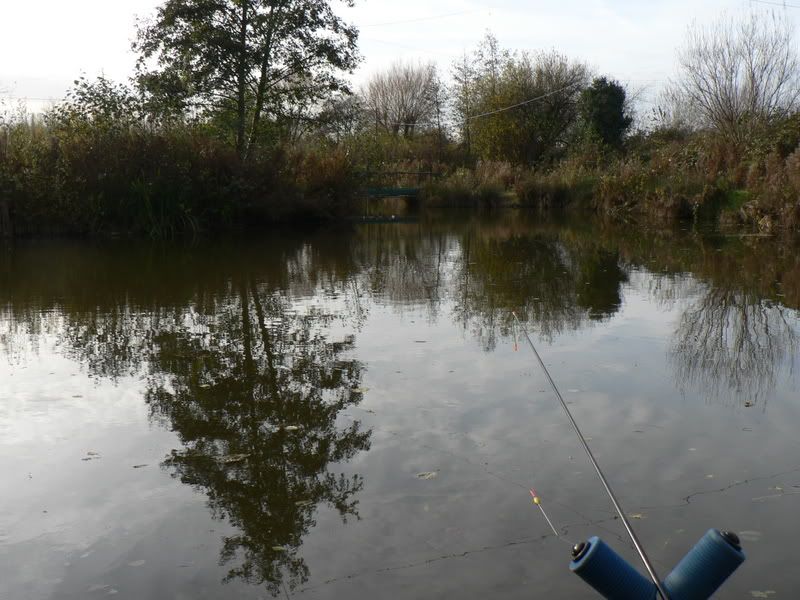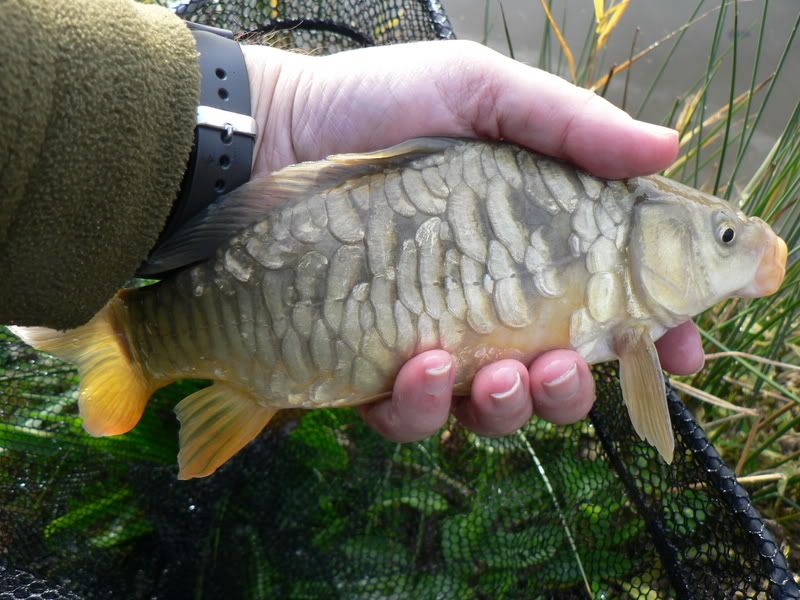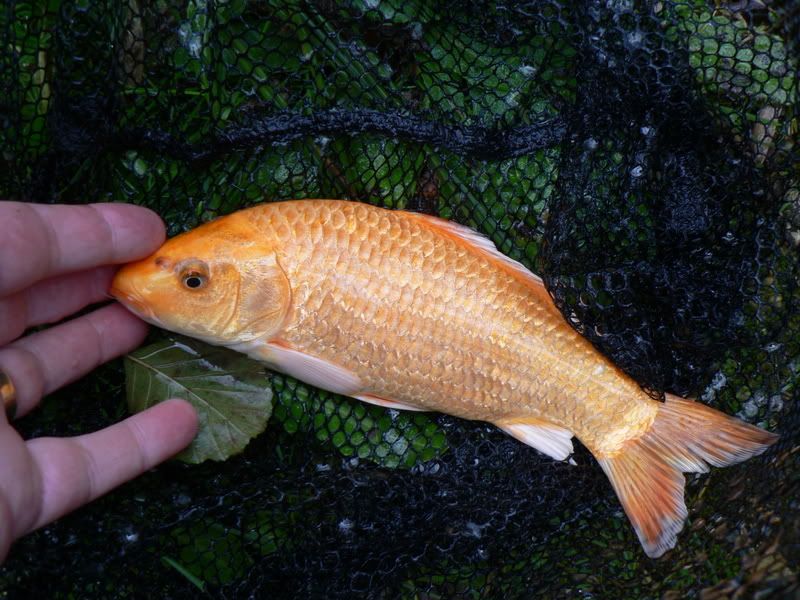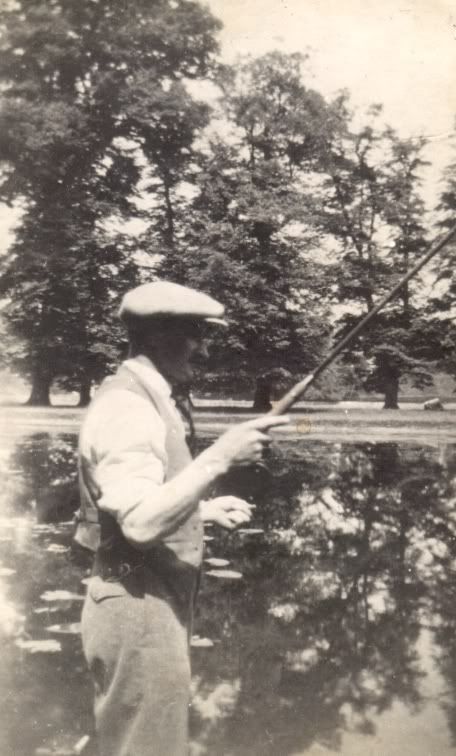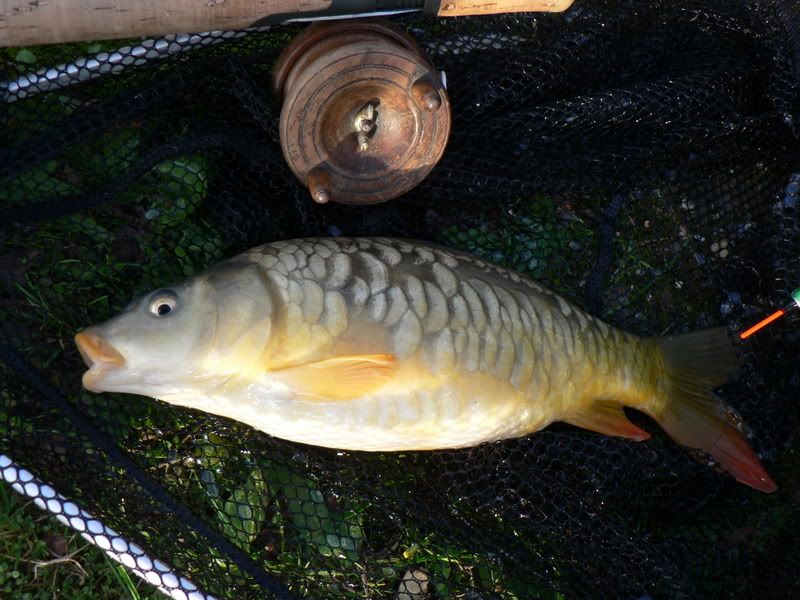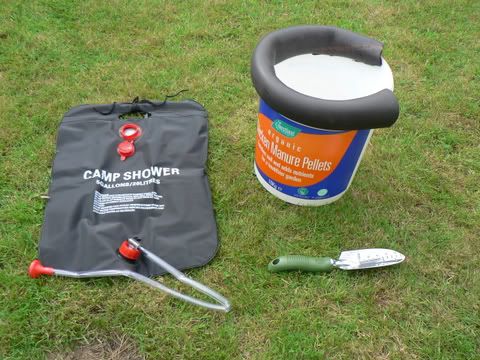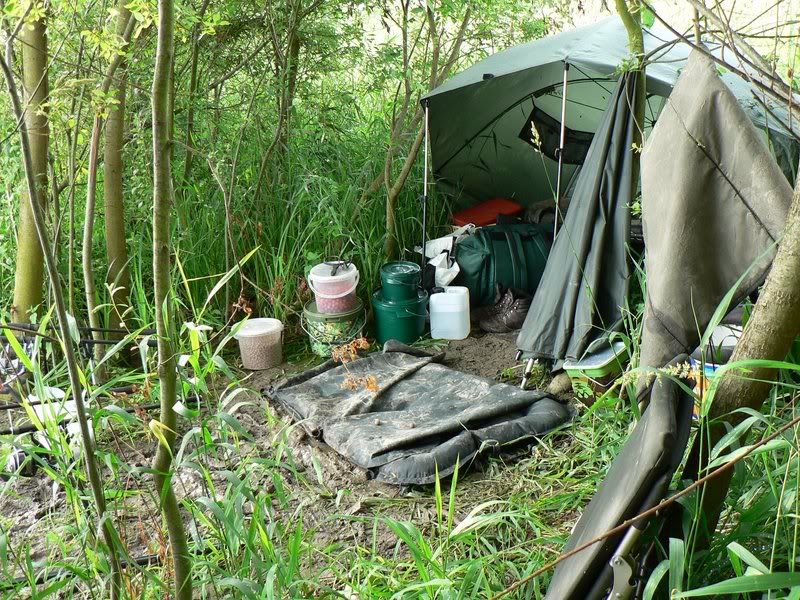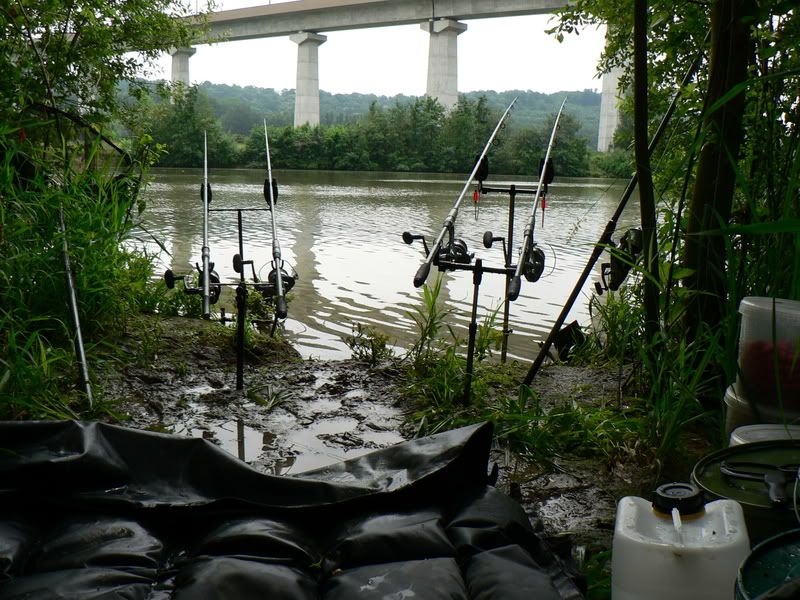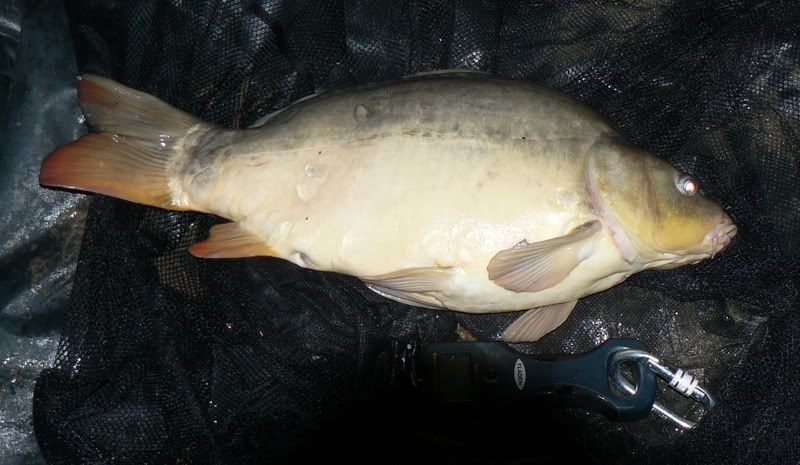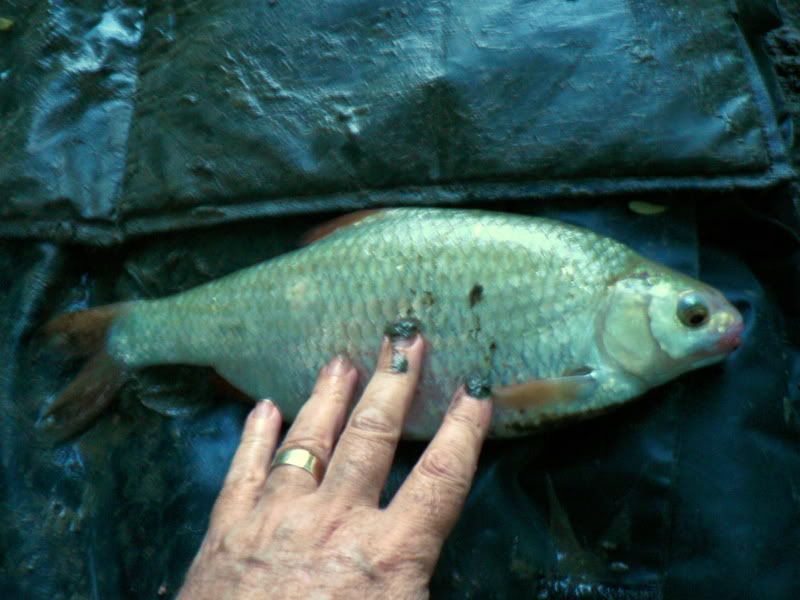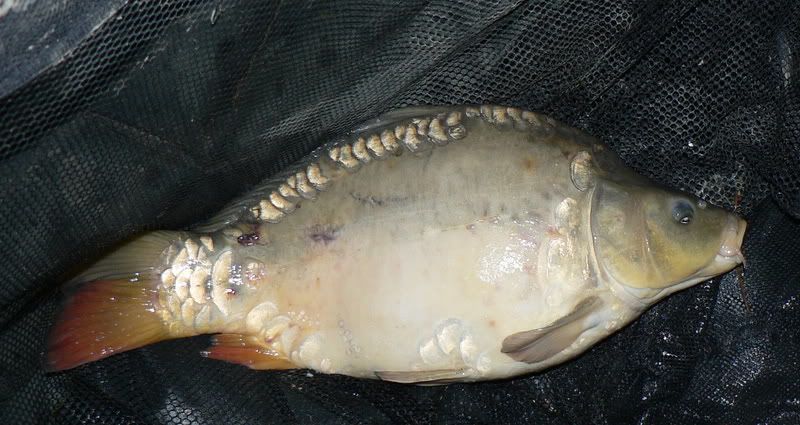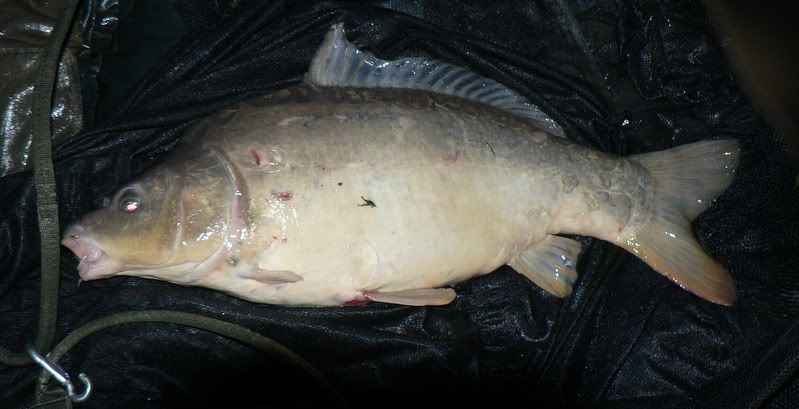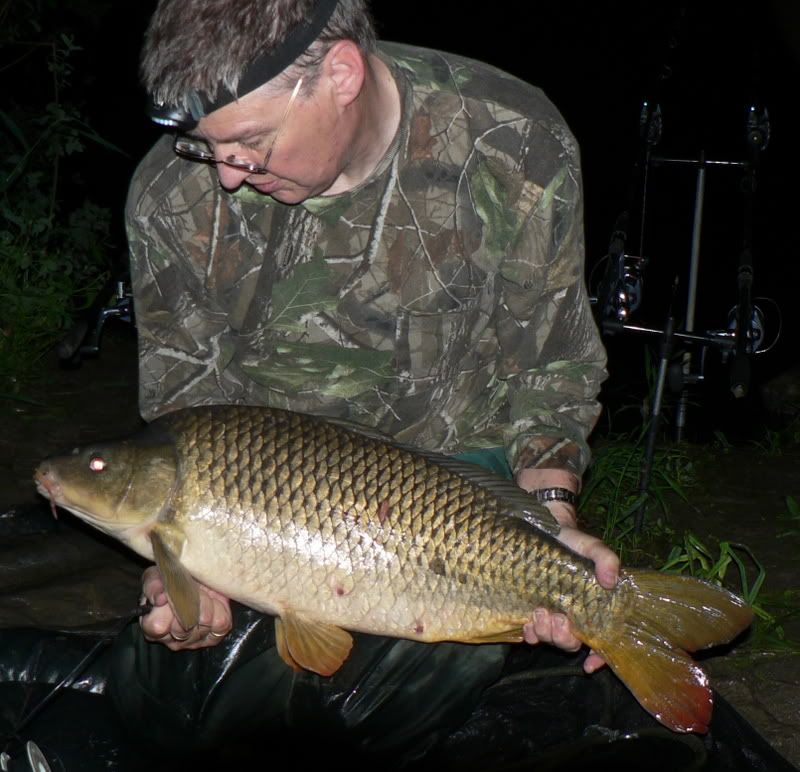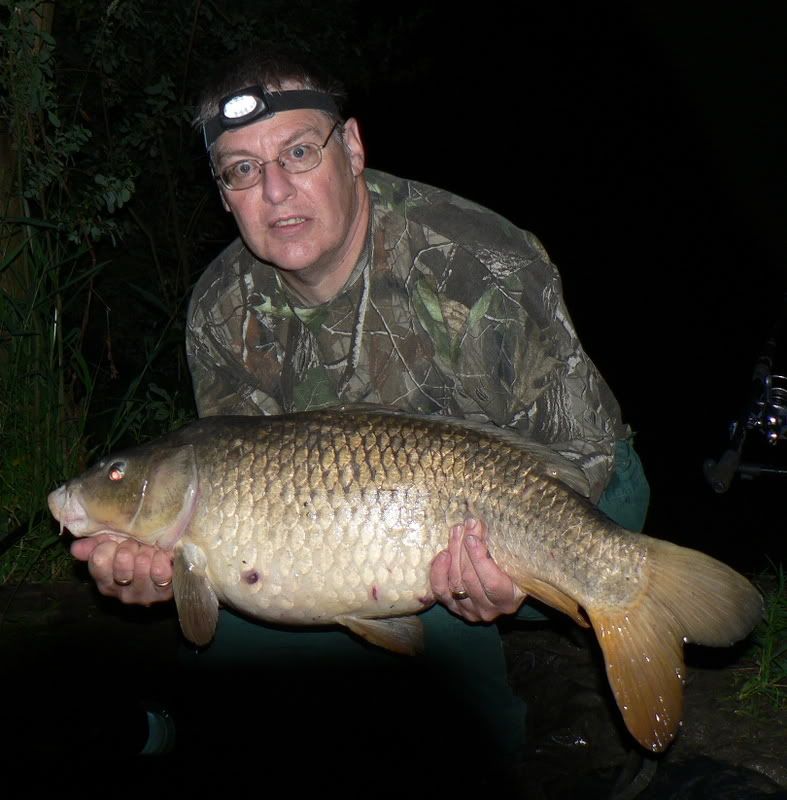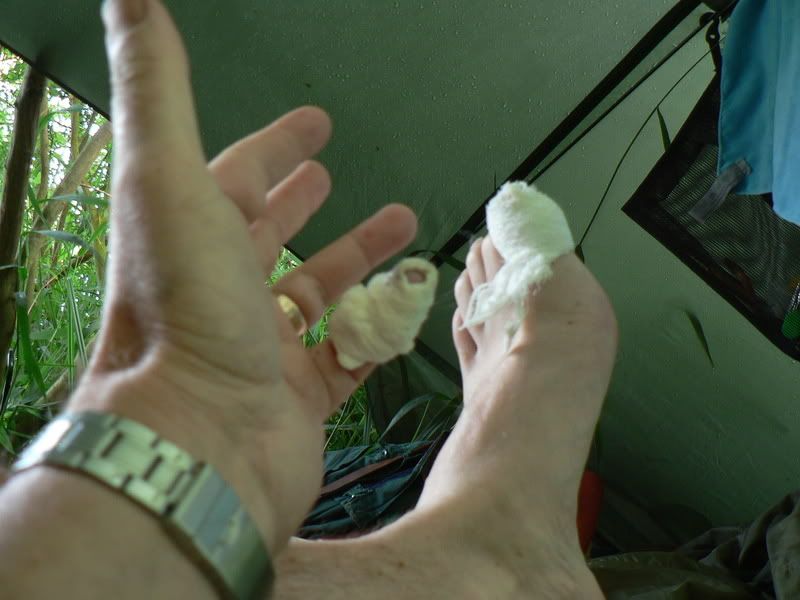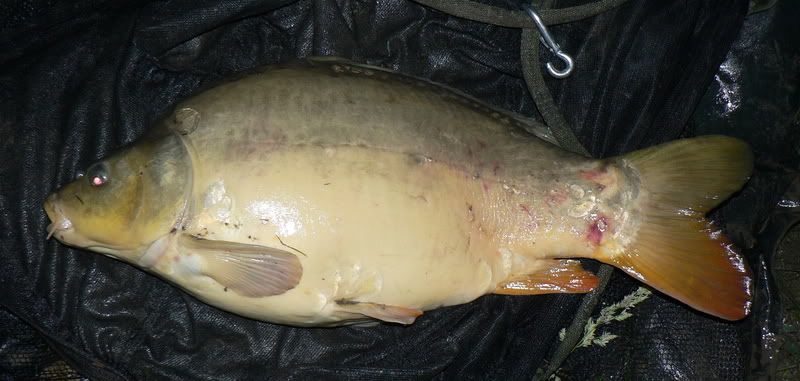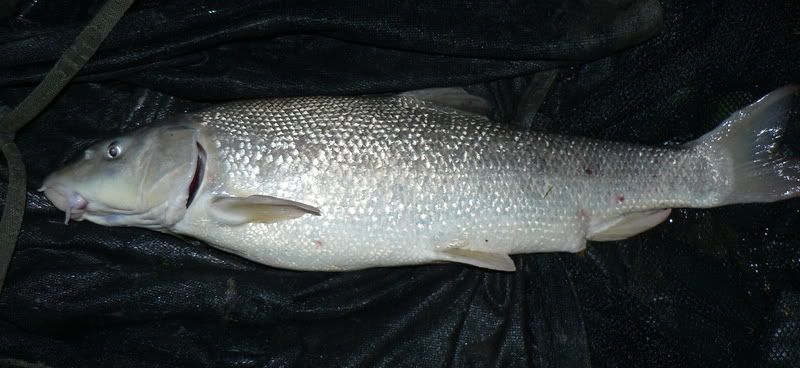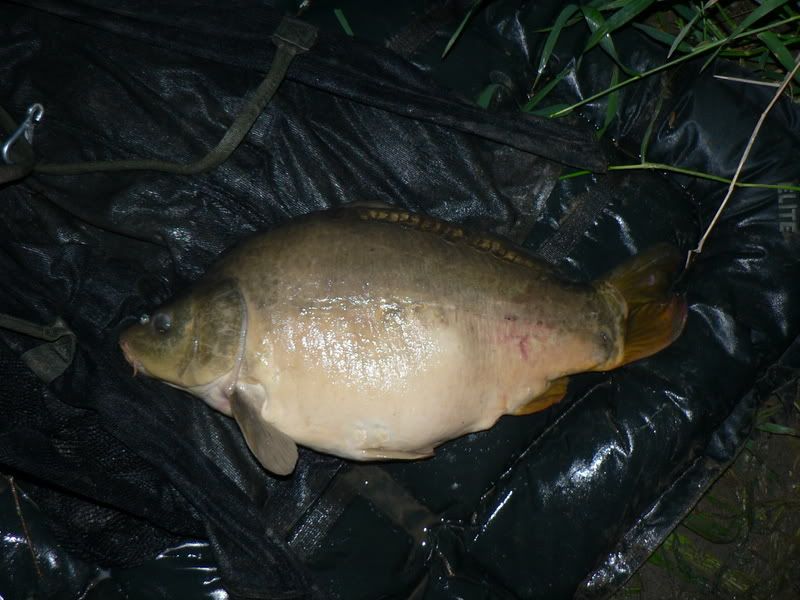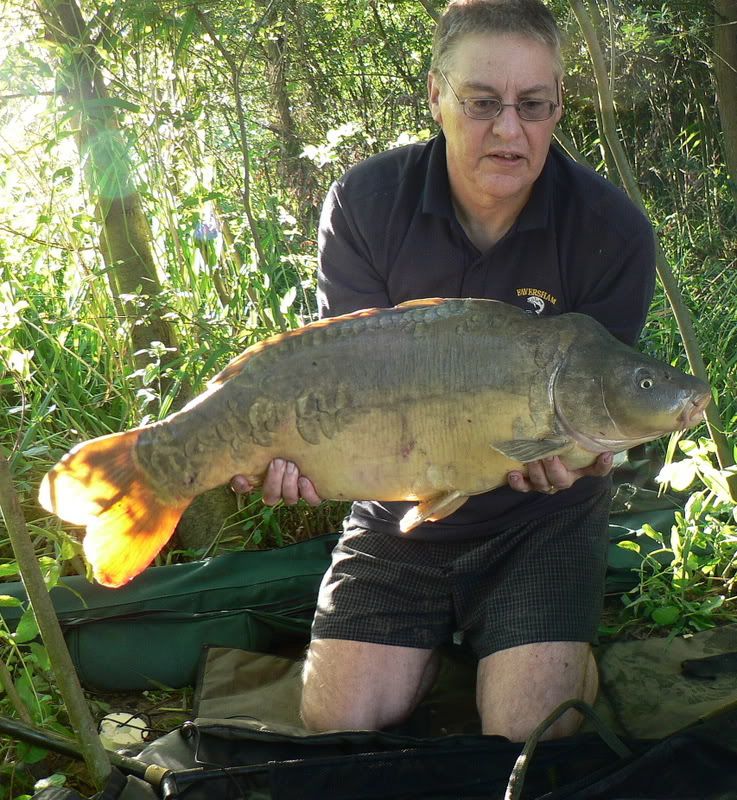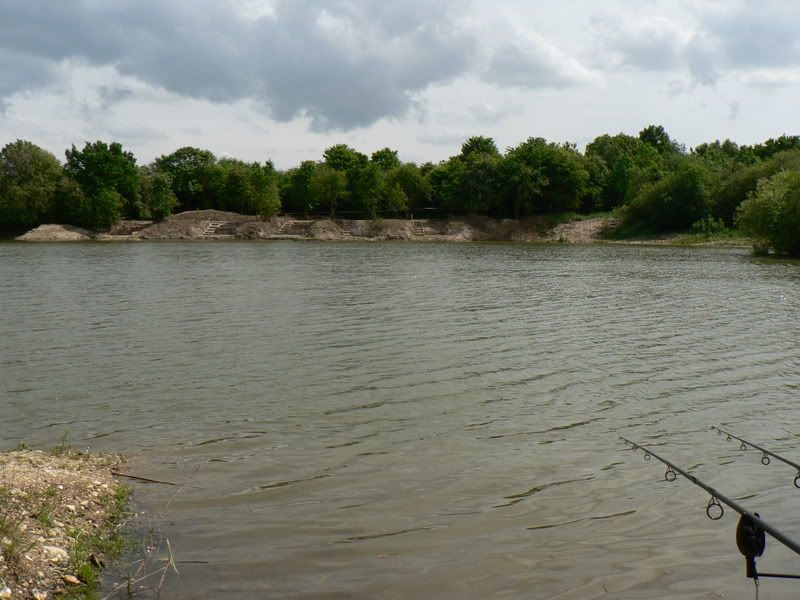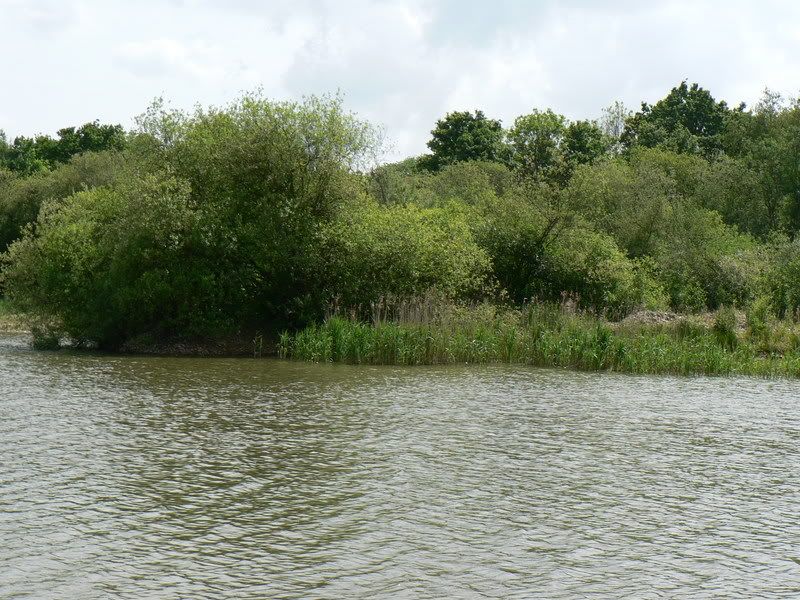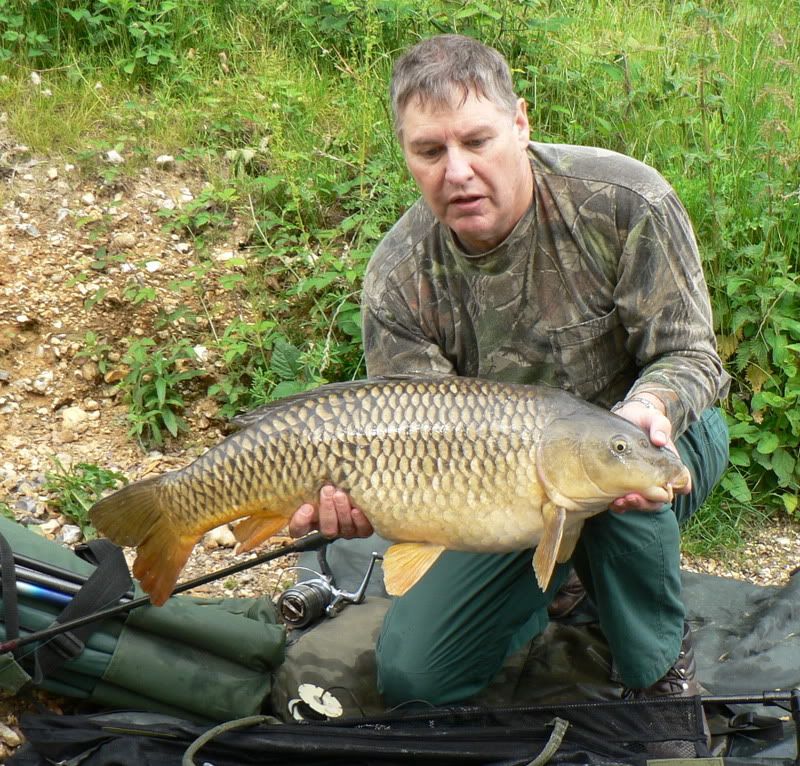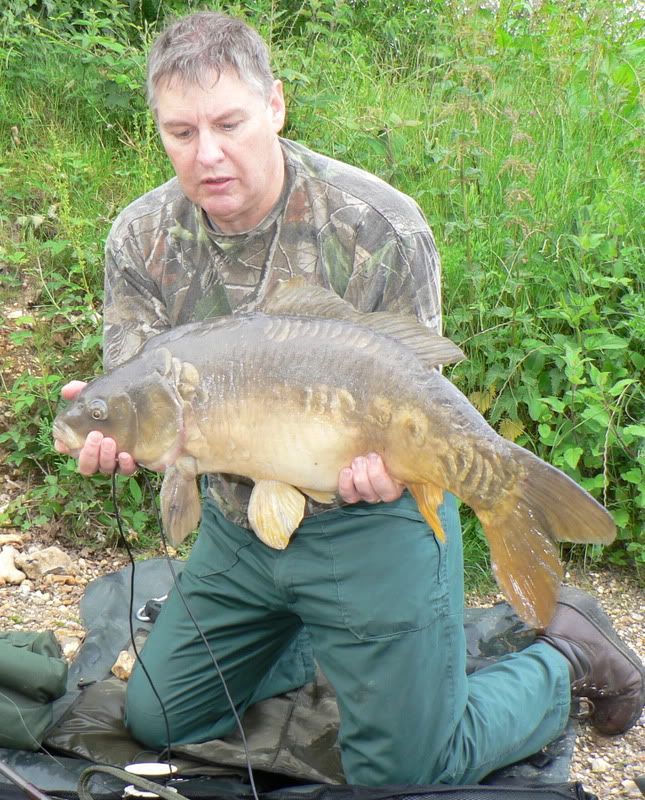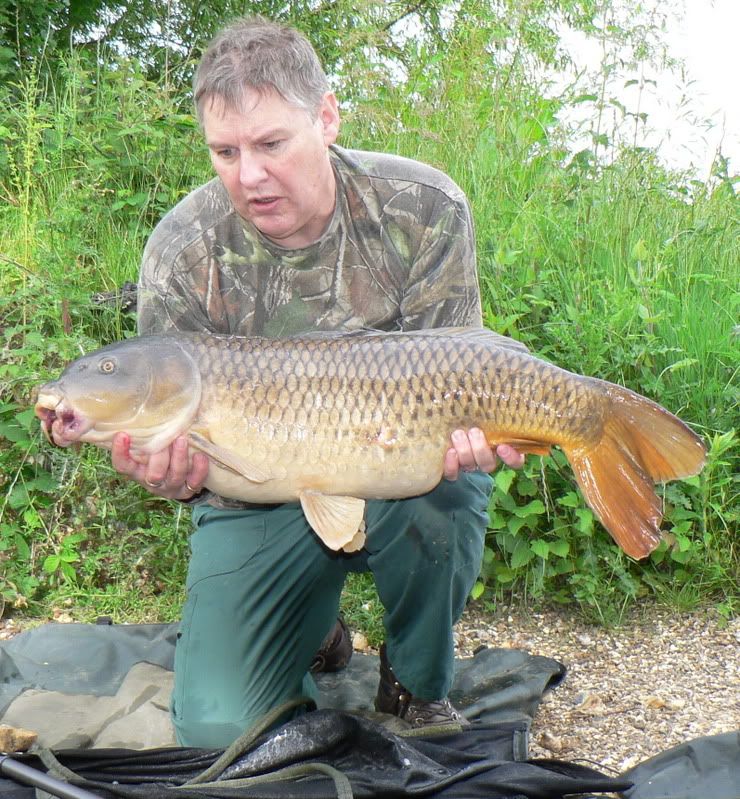The Xmas Maggotdrowners Fur and Feather held at Monk Lakes was a hugely enjoyable event where I had an opportunity to not only meet up with old friends, but also put faces to names and make new acquaintances. As far as the fishing was concerned I actually managed to catch something – unlike the last Fur and Feather I fished when I DNW-ed!
On this occasion, I managed 9 lbs. of fish on the pole which was a reasonable catch for me, but in match terms, I think the term is……………… “battered like a kipper!”.
Guess who I was pegged next to? Yes, the eventual winner Mike Jameson (Omega Mike)! A constant stream of fish came one after another to his net all through the match – not even my interrupting him while he was landing a fish (to borrow a marker pen for my float) stopped the incessant flow!
Good anglers always seem to catch fish – but it is the mark of a great angler that they make it look so easy. Mike falls into the latter category. It seemed effortless, a display of Waggler fishing at its best. I couldn’t believe the distance Mike was able to not only deliver his waggler rig – but detect bites at such long range and bank the fish so quickly. It was well worth turning up just to be pegged beside him and see just how it should be done.
I must say, Mike fired my enthusiasm. Having spent most of the past forty-odd years sat behind a set of carp rods and bite alarms, I’ve only just got to grips with pole-fishing, a relatively simple way of fishing, but like all fishing, with its own set of skills and disciplines.
I am fairly ashamed to say I have done very little waggler fishing. In the grand scheme of things, it is one of angling’s ‘core skills’. I guess if you went on a 'Fishing Course', one of the first things they’d teach you is how to fish the waggler, a most fundamental and basic form of fishing with rod and line.
My thoughts (at witnessing Mike’s display) were “how can I call myself ‘an angler’ if I lack this most essential and basic skill set?” After the match I made a mental ‘note to self’ to correct this deficiency and in my usual fashion set about investigating waggler fishing and the principles involved – for there are principles in all forms of fishing and it is essential to understand them if progress is to be made. I have never considered blind imitation of successful anglers - to equate to proficiency; finding one’s own path is not only far more rewarding but also gives an understanding, possession, and ownership which is unique to self and self alone.
[Those wishing to skip this bit and just want to read how I got on at Monk Lakes – feel free. It’s probably a load of rubbish anyway; but as I’ve said elsewhere, it helps in organising your thoughts about something to write them down]................
The Principles of Float-Fishing
This in no way is intended to be a definitive treatise on float-fishing; these are merely my initial thoughts on confronting what for me is a different way of fishing. The chances are I am completely wrong about all of it. Yet it is the path of the thought processes which is important – not necessarily where that path ends up.
In fishing, paths of discovery rarely have an end anyway.
I take my starting point from the (limited) experience I have of pole fishing. There, no casting is needed, the rig merely being lowered on top of the fish’s heads; but the principles of bite detection and rig presentation hold true – albeit in a different context.
Bite Detection
The idea of a float rig is that when a fish takes the bait, the float dips or disappears enabling the angler to strike. A fairly simple idea you would have thought but in practice full of complications.
Imagine you are fishing a peg six feet deep. Consider a rig with just a float on the line and a hook six feet down from the float. There are no shots between the hook and the float. What would happen is that the float would lay flat and there would be slack line between hook and float (the baited hook may or may not sink to the bottom depending on its buoyancy), enabling a fish taking the bait to move many feet without anything happening on the float at all. That’s why split shot are involved. Weight is needed to counteract the buoyancy of the float by making it ‘cock’ appropriately, and weight is needed to get the bait down to the fish as some baits have almost neutral buoyancy in water (or will even float). But how is the float to be ‘married’ to the shot and indeed what sort of float is required?
I long since learnt from my years of carp-fishing the necessity of understanding how rigs work, what their uses are, and when you should use them. In carp-fishing, there is no, one, rig which does for all situations, and whilst most of the fancy and bizarre creations called ‘carp-rigs’ are not required, there are a few different rigs which work in different ways and understanding the principles behind them is vital. Basically, the choice is long and supple – or short and stiff. The long supple rig is used when you need to give the fish enough slack to take the bait properly before being hooked; the short stiff rig is intended to hook the fish ‘as soon as’ before the bait is spat out. It all depends how the fish are taking the bait on the day and this depends on factors generally associated with competitive feeding, hunger, and the size and quantity of feed around the hook.
The Principle is the same whether it be a carp-rig – or a float rig and the keyword is STIFFNESS.
In order for a float to register a bite, there has to be a tension (or stiffness) between the hook and the float; if there is any slack at all, tugging on the bait won’t move the float and you won’t see the bite. Ideally, the perfect material for a float-rig is a fine, long, piece of wire. As soon as the hook is moved – movement will be seen on the float. This is completely impractical of course and the tension (or Stiffness) between hook and float must be enabled in other ways.
In pole fishing, this is achieved by split shots either spaced along the length of the rig, or bunched towards the hook-end. The weight pulling on the line creates a tension (or stiffness), the only ‘slack’ in the rig being the distance from the last shot to the hook – by default, about six inches or so, although this shot is moved up and down according to how the fish are taking the bait. If they are feeding confidently the shot can be a long way from the hook; if they are finicky, the shot needs to move closer. This distance thing between hook and shot controls the amount of ‘slack’ there is in the rig. It equates to the length of hook-length a carp angler might have on his carp-rig.
But what sort of weight are we talking about? How much?
I am guided by the ‘rule of thumb’ used in pole fishing, that of “0.1 of a gramme for every foot of depth”, hence six feet of water requires 0.6 grammes of shotting for the float.
I turns out that 0.1 of a gramme equates to a single No.6 split shot, so the float rig should have the same number of No.6s spaced down the rig for every foot of water.
Forget about ‘up-in-the-water-rigs’ for the moment.
Based on this, I tested a number of waggler floats to see how many shots they take with a benchmark of (say) six foot depth of water (which most commercials seem to be). So shotting will be 6 x No.6s plus whatever else is needed to cock the float appropriately. If I knew I was going to fish a water up to nine feet deep I’d test the float with 9 x No.6s plus whatever else is needed to cock the float.
The basic principle is that a number 6 shot must be fixed to the rig at one foot intervals in order to create tension or stiffness to the hook.
Waggler Floats
The waggler float is fixed at the bottom end only. This does two things:
1. It avoids tangles on the cast.
2. It helps sink the line below the surface drift.
The longer the float, the greater its ability to combat surface wind and drift. A technique that must be adopted of course is that several turns of the reel must be made to sink the line near the float, otherwise great bows in the line occur – a problem I discovered when I first tried the rig out...............
Monk Lake, Match Lake 1, Thursday 27th.December
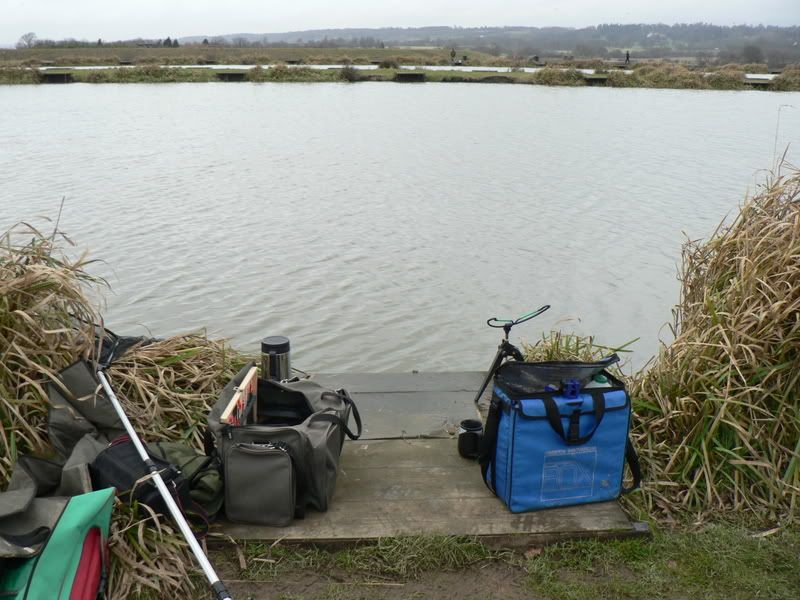
There were matches on lakes two and four on the day so I plumped for lake 1 – where the Fur and Feather had been held; just for the hell of it I decided to fish exactly the same peg I’d drawn in the match to see what I could catch compared to what I’d caught in the match although a fair comparison was out of the question since conditions were much milder than on match day and I had the whole of this side of the lake to myself. Lack of angling pressure aught to have increased my catch-rate.
At peg 37 the wind was blowing a ‘hooligun’ (although it looks calm enough in the photo). Great gusts were charging down the lake from left to right and I should have thought it would have been a nightmare trying to pole-fish on such a day. I set up my John Wilson Avon/Quiver at thirteen feet and coupled it with a Shakespeare Powerplay loaded with 3 lbs. Line. The float was a Drennan insert peacock quill carrying 3½ AAA – but in fact I had pre-tested it and loaded up with 2 x AAA + 1 x BB + 7 x No.6. the bulk of the shot were grouped around the base of the float and the No.6s spaced at one foot intervals. Plumbing-up was done by pinching an AAA on the loop of the six-inch hooklength so effectively I had six inches of hooklength hard on the bottom. Three cups of red and white maggots were catapulted out in front at the start.
Co-incidentally, the match on Lake 2 kicked off at the same time as I made my first cast so I determined to stop fishing at the final whistle and see how many I’d caught.
My first cast landed with a splosh and on reeling in I was confronted with a tangled mess. Not a good start. Five minutes lost sorting the thing out and trying again. Casting was completely different to what I am used to. Give me a 3 lbs. TC carp rod and a 3 oz lead and I will throw it 100 yards – cast a waggler rig and it’s a different story – it’s essential to ‘feather’ the cast to help straighten things out so the rig settles nicely, the wind having only minimal effect on the float once it settles due to several sharp turns of the reel with the rod-tip sunk beneath the surface to sink the line.
Things were slow to start and I had to introduce several cups of maggots before I had the first bite – the float suddenly disappearing from sight. My strike only succeeded in rasping the clutch. I was quite surprised at how much resistance there is on such light tackle – no doubt due to the long length of sunk line. I adopted my usual practice of setting the clutch of the reel before casting but realised this must be screwed tight in order for an effective strike to be made. Despite this early ‘lesson’ I still forgot to screw the damn thing down at intervals during the day and missed several fish because of it. The protocol is: screw clutch up tight, cast out, hook fish, loosen clutch; and then before casting out again – screw clutch tight again.
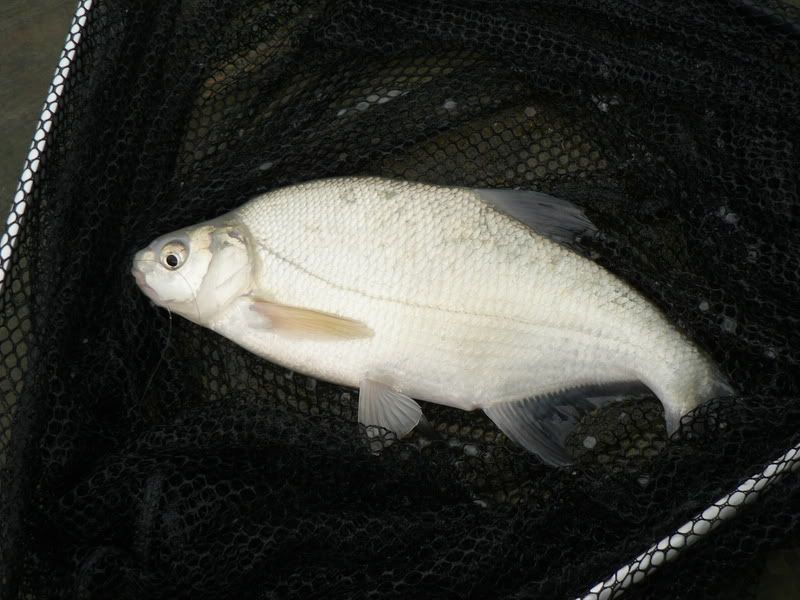
Eventually however I got ‘off the mark’ and was amazed at what fun the light tackle was. Fish of between half a pound to two pounds give a more than a respectable account of themselves on fine lines, tiny hooks, and light rods. I’ve had less fun with double-figure carp and ‘heavy gear’ on occasions.
The thing I like about Monk Lakes is that it seems such a ‘fair’ venue. The lakes are absolutely stuffed with fish and I doubt you’d have a complete blank even on the harshest of days – provided of course you fish with a reasonable degree of proficiency, although few can hope to match the skills of Mike Jameson, Peter Morton, and several other Maggotdrowners. On a cold, harsh, winters day, what better than to catch fish at regular intervals throughout? I doubt I had to wait more than ten-fifteen minutes before getting a bite although it is testament to my ineptitude that my conversion rate of around 75% was less than satisfactory – mostly due to not sinking the line properly and striking against a great slack ‘bow’.

I also fed much more than I did in the match. The rise in temperature definitely got the fish feeding and at no stage was I aware of over-feeding, something I’m acutely aware of in the winter.
As you can see, I got a fair selection of what lake 1 has to offer – Bream, carp, F1s, and what I think are Ide. I am not familiar with Ide so I am not certain of their identification but I enclose a picture of one of several I caught. Perhaps someone can enlighten me as to how they can be i.d.-ed. These fish looked very much like Roach but weren’t if you know what I mean. As I say I have never seen Ide so I don’t know what they look like.
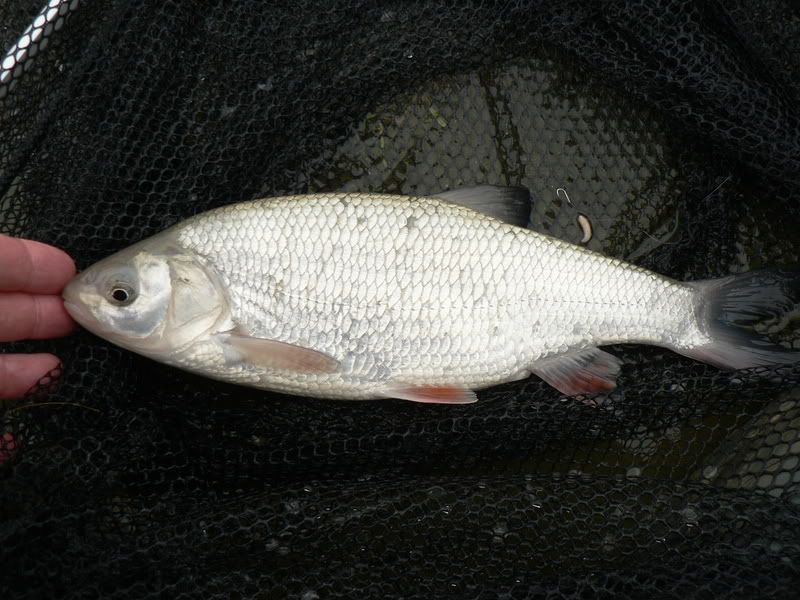
I had one that was well over the pound and put up a fair old scrap – they were well worth catching.
Curious thing during the day was the pattern of shoal movements.
At the start I caught three or four Bream, followed by a blank spell – then one or two carp, then a blank spell – then it was F1s for a while – then another blank spell as they moved off – then it was Bream again, then something else. The fish definitely shoal together and obviously cruise around with their mates, the interesting thing being you never know which shoal is going to be next. I assume the fact the shoals were here-and-gone meant that I failed to hold them with feed; chances are I could have fed even more and prolonged their stays.
On a match lake like this there is every chance the fish have cotton-ed on to the fact there is free feed if they cruise about the lake for it will be somewhere in every peg that is being fished. In an overstocked venue such as this food is at a premium. Although I could be wrong, I doubt the fish in the match lakes will ever grow very large because there is simply far too many of them for the food available – even given the regular contributions made by anglers.
At the ‘weigh-in’ I’d had 21 fish – far, far less than Mike and most of the Fur and Feather participants had, although I considered the session a learning-curve on what for me was a new method. Averaging between half and three-quarters of a pound each I should think my total was somewhere around ten-and-a-half and fifteen-and-three-quarter pounds; probably nearer 12-13 lbs. Or so. This would have still only put me in 13 th. Place or so! Guess I’ll never make a match angler!
Huge fun. Will certainly be doing it regularly in the winter months when the big carp are ‘asleep’.
